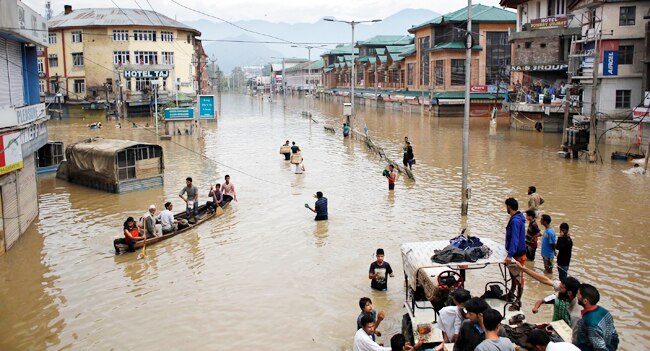
New Delhi: Glaciers in the Hindu Kush Himalayan (HKH) region will keep shrinking and the snow cover will retreat to higher altitudes, the latest IPCC report said on Monday.
The Sixth Assessment Report (AR6) of the Intergovernmental Panel on Climate Change (IPCC), approved by 195 member countries, warned that extreme precipitation is projected to increase in major mountainous regions with potential cascading consequences of floods, landslides and lake outbursts in all scenarios.
One of the authors of the report, Krishna Achuta Rao, said in the HKH region, the snow cover has reduced since the early 21st century and glaciers have thinned, retreated and lost mass since the 1970s.
However, he said, the Karakoram glaciers have either slightly gained mass or are in an approximately balanced state.
“Snow-covered areas and snow volumes will decrease during the 21st century, snowline elevations will rise and glacier mass is likely to decline with greater mass loss in higher greenhouse gas emission scenarios. Rising temperatures and precipitation can increase the occurrence of glacial lake outburst floods and landslides over moraine-dammed lakes,” Rao said.
According to the report, mountain glaciers will continue to shrink and permafrost to thaw in all regions where they are present.
Moraine-dammed lakes are normally formed near glacier terminus. These lakes can burst due to excessive melting and can cause floods in the valleys. Many such floods have been reported in the Himalayas and other parts of the world.
Another author of the report, Swapna Panickal, who is a scientist at the Indian Institute of Tropical Meteorology, said human influence is responsible for the retreat of glaciers since the 20th century and that is not only the case in the two poles, but also for mountain glaciers.
She said reducing emissions now will not stop the retreat of glaciers as it is a slow process.
“Glaciers are also one of the slow responding parts of the climate system, so what we see now is not the retreat to expect from the warming we currently have. So even if we stop emitting right now or admit to stopping global warming at 1.5 degrees Celsius, we will see further retreat of glaciers. That is of course an important climatic impact driver, because it has huge implications for fresh water availability in the region,” Panickal said.
According to the report, the freezing level height in mountain areas is projected to rise and will alter snow and ice conditions.
“Warming has occurred in the Himalayas, the Swiss Alps and the central Andes, and has increased with altitude. Such elevation-dependent warming could lead to faster changes in the snowline, the glacier equilibrium-line altitude and the snow/rain transition height (high confidence),” the IPCC report said.
A 2019 IPCC report on oceans and the cryosphere in a changing climate had revealed that the HKH region, an area covering high mountain chains of central, south and inner Asia, faces the risk of losing over 60 per cent of its glaciers by 2100.
The region includes mountain ranges of the Tien Shan, Kun Lun, Pamir, Hindu Kush, Karakoram, Himalayas, and Hengduan and the high-altitude Tibetan Plateau and it produces one of the world’s largest renewable supplies of freshwater.
It supports a population of 12 crore directly through irrigation systems and 130 crore people indirectly through the river basins in India, China, Nepal, Pakistan, Bangladesh and Afghanistan. (PTI)
Follow this link to join our WhatsApp group: Join Now
Be Part of Quality Journalism |
Quality journalism takes a lot of time, money and hard work to produce and despite all the hardships we still do it. Our reporters and editors are working overtime in Kashmir and beyond to cover what you care about, break big stories, and expose injustices that can change lives. Today more people are reading Kashmir Observer than ever, but only a handful are paying while advertising revenues are falling fast. |
| ACT NOW |
| MONTHLY | Rs 100 | |
| YEARLY | Rs 1000 | |
| LIFETIME | Rs 10000 | |










